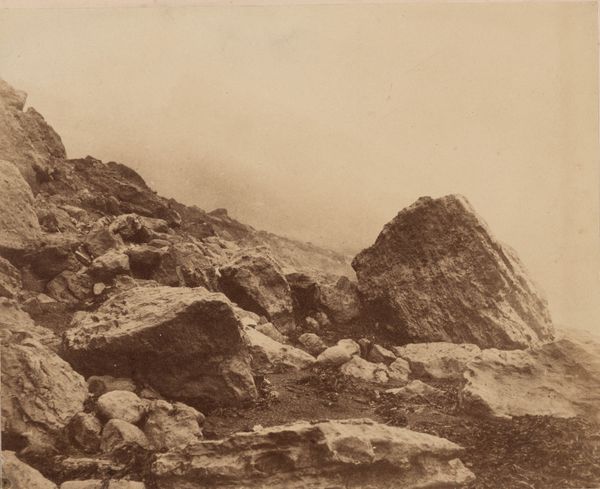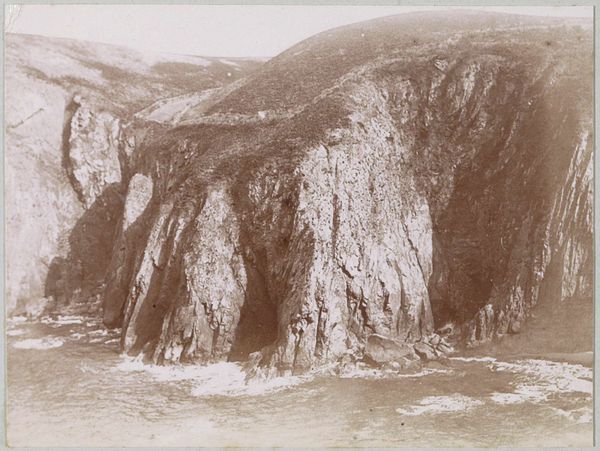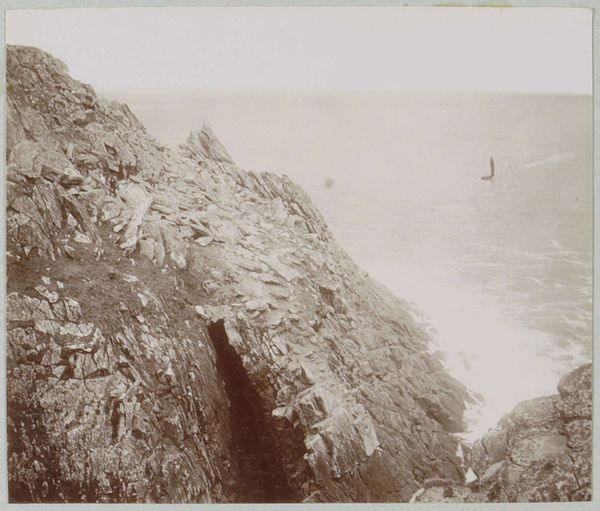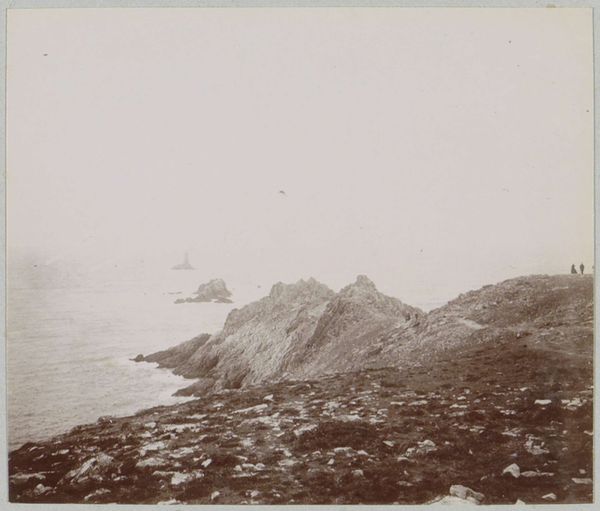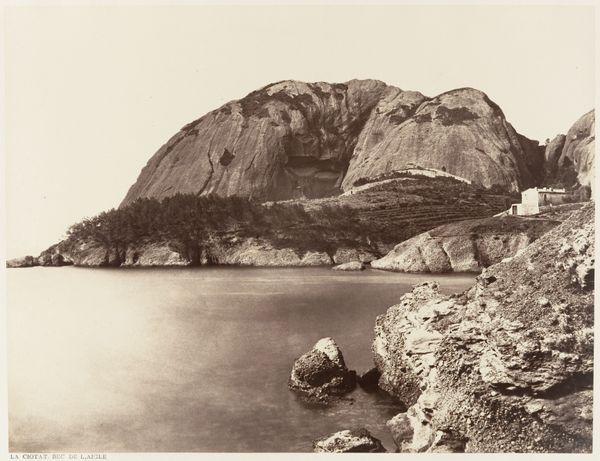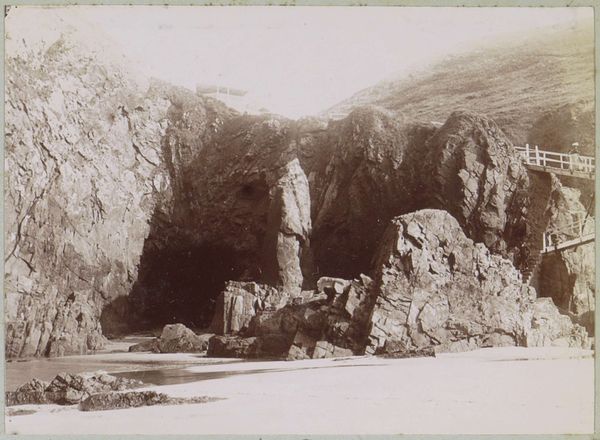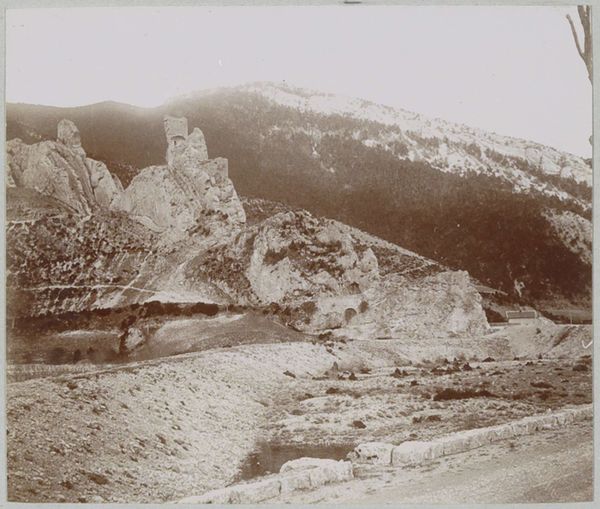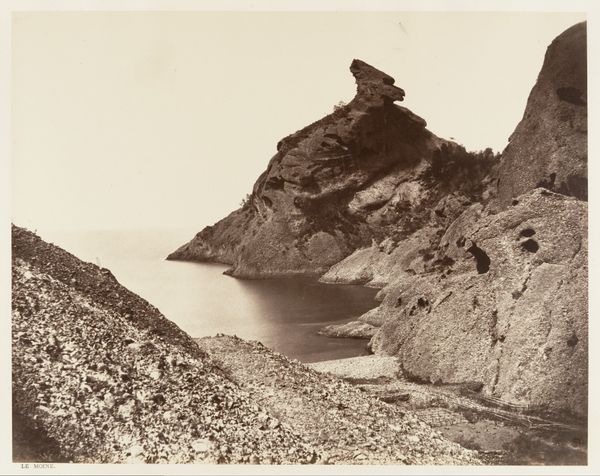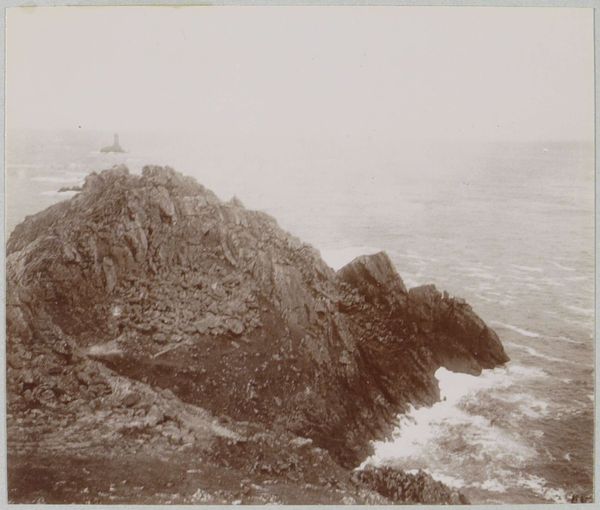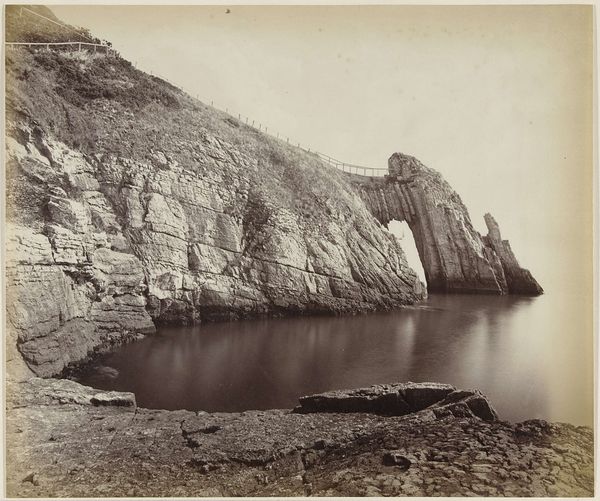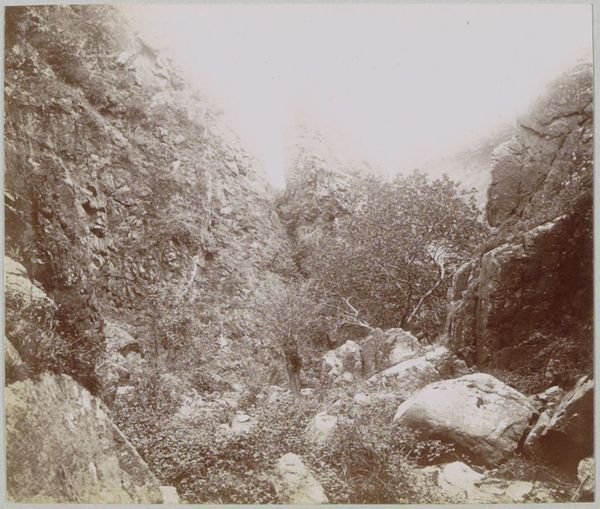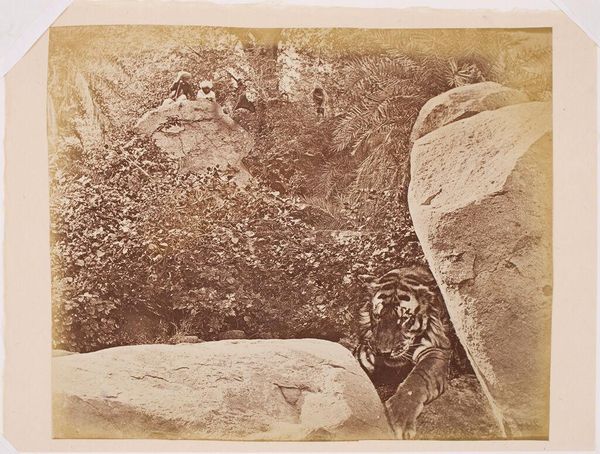
print, photography
# print
#
landscape
#
photography
#
watercolor
Dimensions: height 99 mm, width 178 mm, height 315 mm, width 421 mm
Copyright: Rijks Museum: Open Domain
Curator: This photograph, entitled "Rode rotsen bij Menton," or "Red Rocks at Menton," is attributed to Neurdein Frères, dating from the period between 1863 and 1891. The medium is print, specifically photography, showcasing a landscape. Editor: It’s strangely beautiful. There's a stillness in the water that reflects the solidity of that massive rock formation. The tones are muted, almost sepia-like. It makes you feel both peaceful and a little small. Curator: What strikes me is how this image captures a burgeoning era of tourism. Menton, a French Riviera town, became a popular destination. Photography, like this piece, helped fuel the romantic image. Editor: Absolutely. This photograph performs as a historical record and marketing for tourism. And yet, looking at it from a modern perspective, what are the untold stories? Who lived in Menton beyond the visitors? Whose labor constructed the seaside infrastructure hinted at in the image? Curator: That's an essential point. The very act of framing this picturesque scene potentially obscures the lived realities of many. Consider that these red rocks weren't just scenic wonders but held different cultural meanings for the people native to the area. Editor: The photograph raises complex questions about representation. Are we seeing a landscape, or a carefully constructed projection of an idealized place? What social and economic forces are at play, deciding which stories get told, or in this case, which views get photographed? Curator: Furthermore, understanding the history of photography itself adds another layer. The Neurdein brothers were among many commercial photographers who saw value in mass producing such views. The image functions as an early form of mass media, shaping perception of place. Editor: Right, and that mass production comes at a cost. Whose stories get flattened in that process of idealization? It pushes me to wonder how marginalized communities are affected by those aestheticized, widely-consumed narratives. Curator: Indeed. A seemingly straightforward landscape reveals a fascinating web of historical, social, and cultural factors shaping our understanding of the French Riviera then and now. Editor: It leaves you contemplating how seemingly objective images are deeply interwoven with ideology, power, and perspective.
Comments
No comments
Be the first to comment and join the conversation on the ultimate creative platform.
